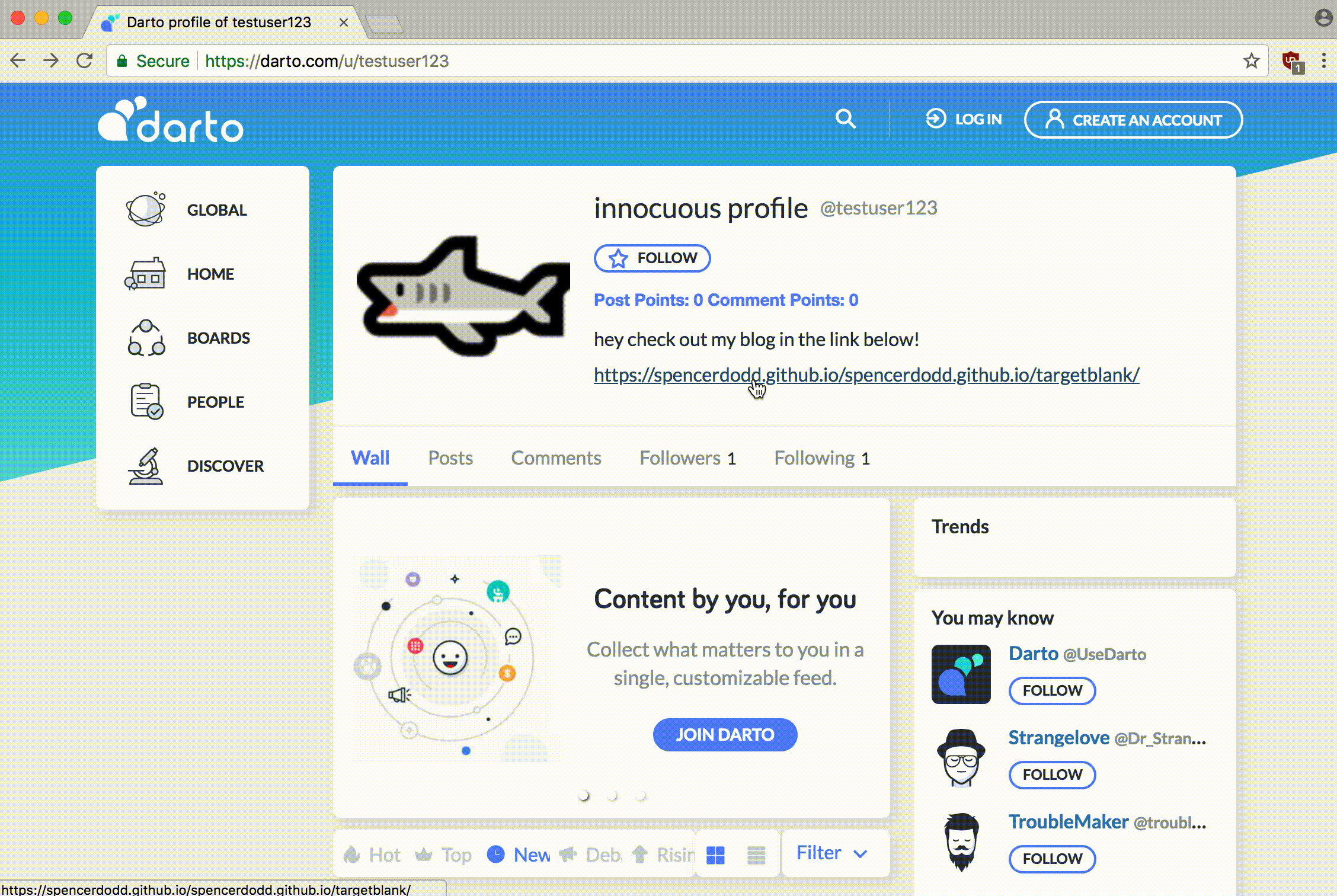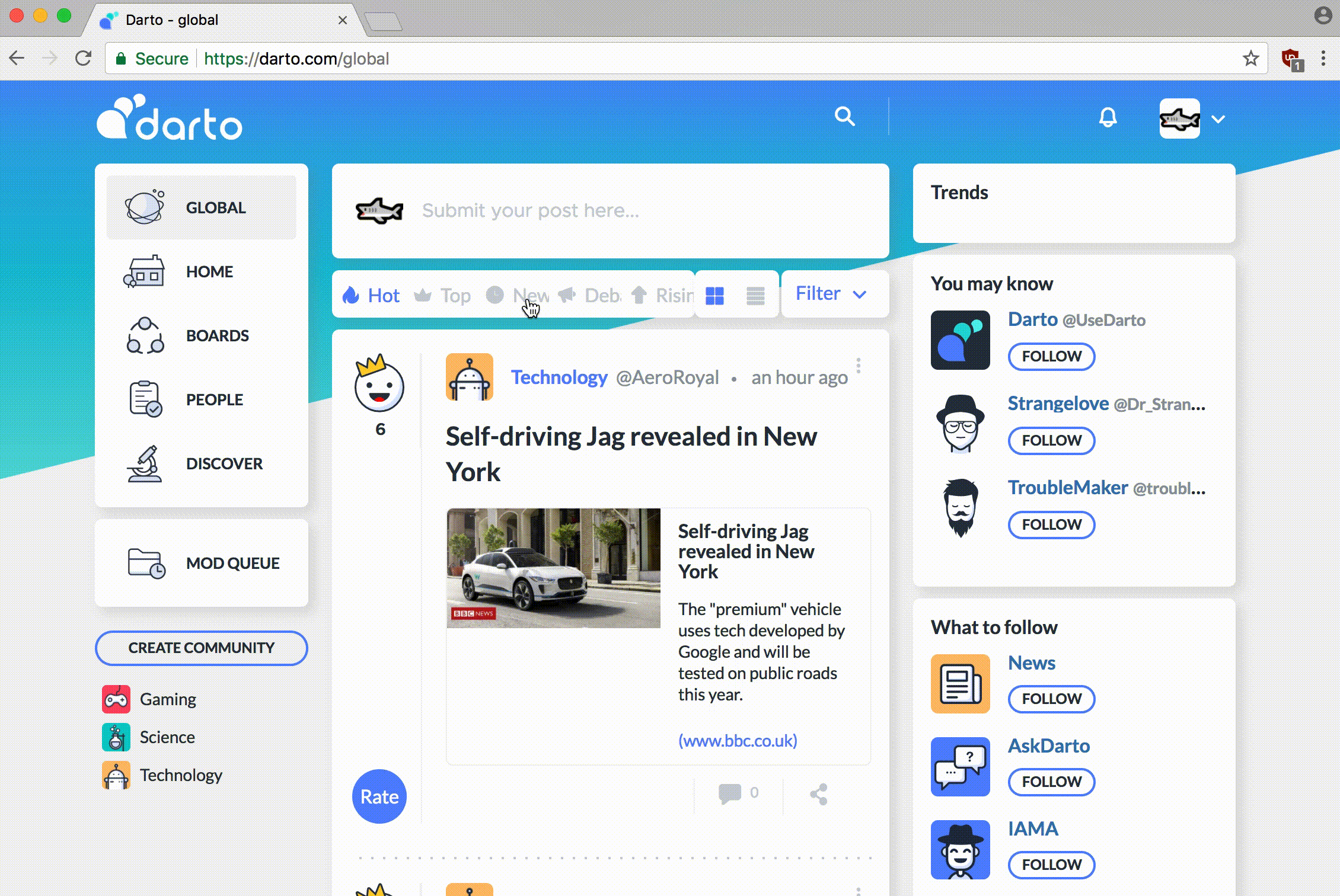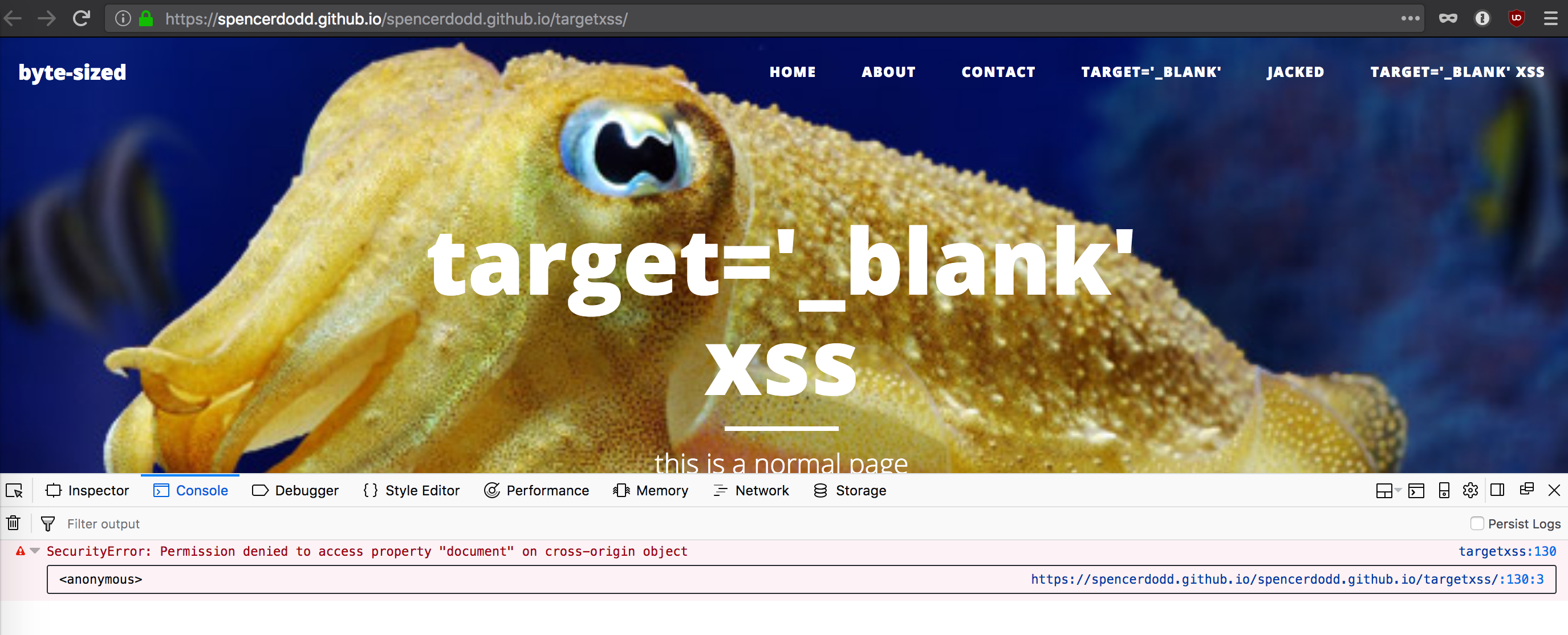intro
I came across an interesting vulnerability the other day. It has been talked about before, but was new to me and I found an exploitable example in the wild so I thought I would write a post about it. The vulnerability in question is the target="_blank" vulnerability.
the vulnerability
I was messing about on a new social media site, darto.com, and went to the user profile page, where I have previously found some good stuff (see CVE-2018-7663). I noticed that users were allowed to set a Website field that was externally viewable by other members of the site. Investigating vulnerabilities around hrefs, I saw an interesting post about target="_blank"here.
The gist of the vulnerability is that when a new tab is opened, it retains some access to the original page that initiated the tab opening via the window.opener JavaScript API. The API can be used to set the location of the origin page by setting the value of window.opener.location to the website of choice. It is readily apparent that this could be used to implement a potent phishing attack. A user clicks a link and their focus is switched to the tab that was opened. The page, now filling the browser, executes JavaScript that changes the content of the previous tab to any site it pleases. This switch happens on page-load and while the user is looking at the new tab, so any page refreshing is not readily apparent.
The vulnerability was very recently added to MITRE’s Common Weakness Enumeration (CWE) database as CWE-1022.
PoC || GTFO
The exploit itself is very simple. The PoC I used is as follows:
<script>
if (window.opener) {
window.opener.location = "https://spencerdodd.github.io/pocs/targetblankd/";
}
</script>
That’s it. My PoC exploit page (the one that will be placed in a vulnerable href) can be found at https://spencerdodd.github.com/pocs/targetblank. My PoC simply redirects to another PoC page highlighting the location change. Here is the exploit in action in two different vulnerable locations I found on the the website in question:
user profile

site-wide post

fixes
This vulnerability stems from hrefs not having the rel="noopener" attribute set. Accompany all hrefs that will open in a new tab (i.e. target="_blank"), with either
rel="noopener"
or
rel="noopener noreferrer"
The latter of which offers protection for Chrome, Safari, Opera, and Firefox users, the former of which only offers protection for Chrome, Opera, and Safari users. This is what a vulnerable href looks like:
<a class="top-user_website" href="https://spencerdodd.github.io/pocs/targetblank/" target="_blank">https://spencerdodd.github.io/pocs/targetblank/</a>
and this is what a non-exploitable href looks like:
<a class="top-user_website" href="https://spencerdodd.github.io/pocs/targetblank/" target="_blank" rel="noopener noreferrer">https://spencerdodd.github.io/pocs/targetblank/</a>
xss
As a quick aside, I tried a simple XSS payload:
window.opener.document.write("\x3c\x73\x63\x72\x69\x70\x74\x3e\x61\x6c\x65\x72\x74\x28\x31\x29\x3b\x3c\x2f\x73\x63\x72\x69\x70\x74\x3e")
aka.
window.opener.document.write("<script>alert(1);</script>")
However, this was denied as modifying the document object is considered a violation of the cross origin policy.

timeline
-
2018-03-27: discovery of vulnerability -
2018-03-27: disclosure to darto.com admins -
2018-03-27: response from admins recognizing the vulnerability and intent to fix that night -
2018-03-28: vulnerability verified patched viarel="noopener noreferrer" -
2018-03-28: permission given to publicly disclose the vulnerability
addendum
I thought this was a cool vulnerability, and now that I know about it, I’ve been seeing it all over the place. It is a potentially potent phishing vector, and probably something more people should know about. Until next time!
-coastal